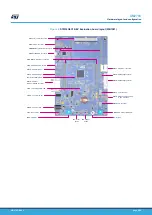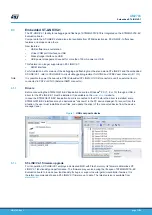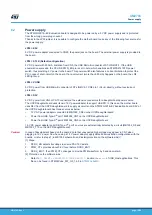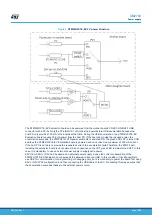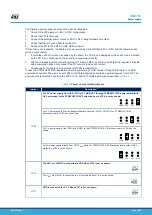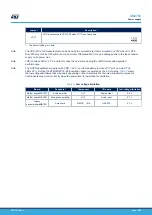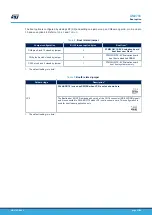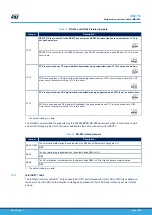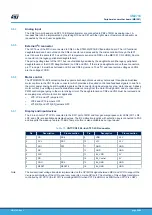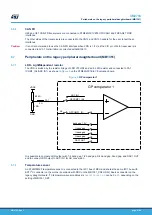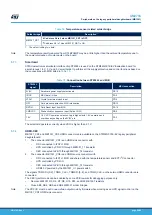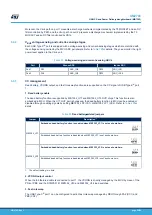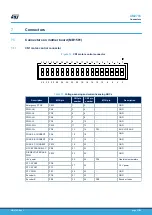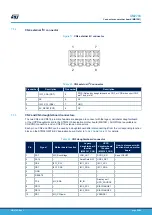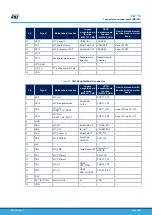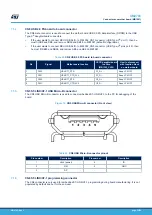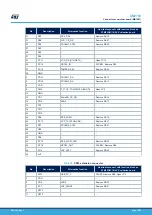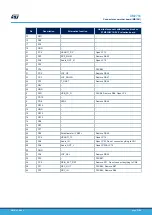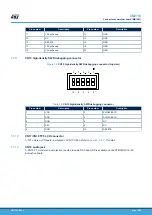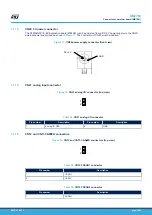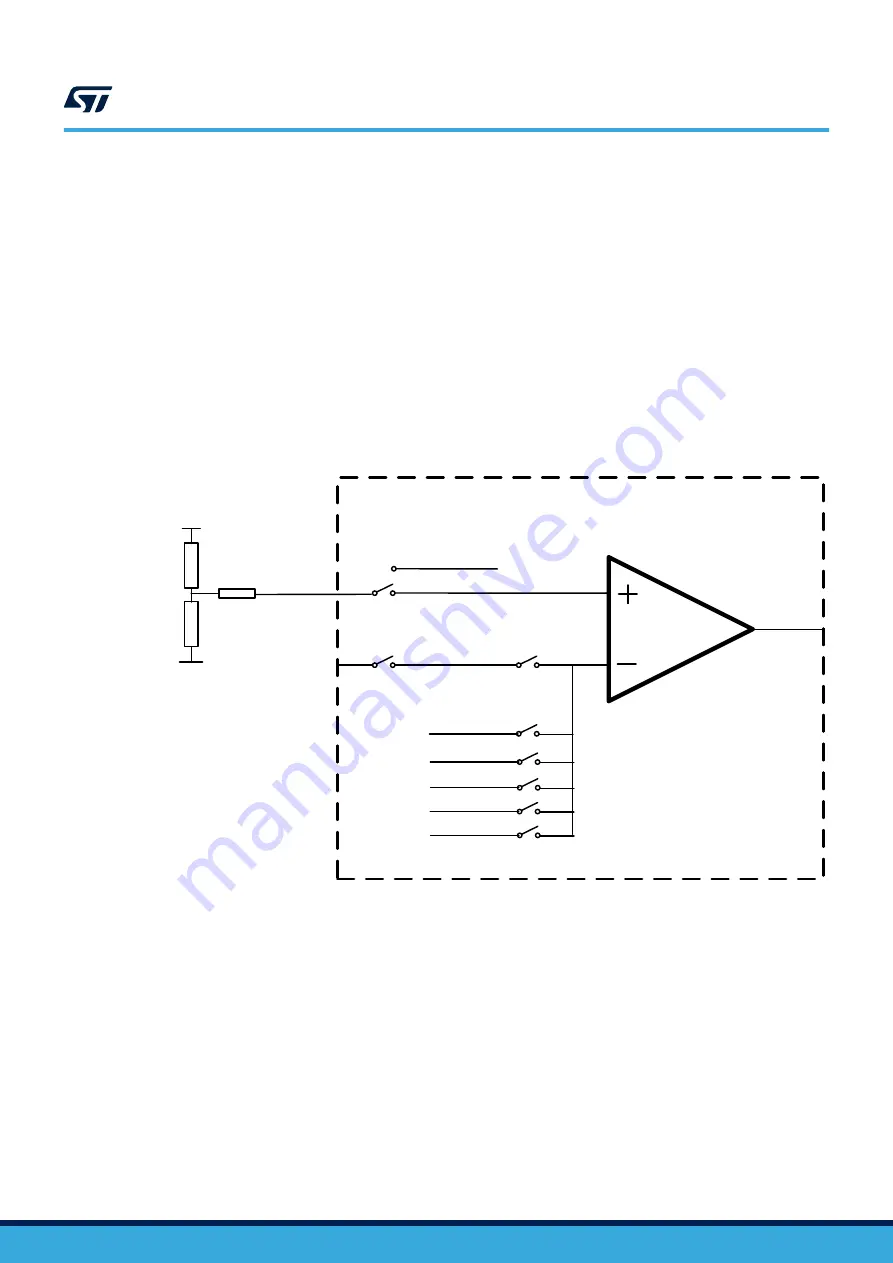
6.6.8
CAN FD
U26 and U27 CAN
‑
FD transceivers are connected to STM32G0C1VET6U FDCAN1 and FDCAN2 TX/RX
interfaces.
The other sides of the transceivers are connected to the CN12 and CN13 headers for the user to test these
interfaces.
Caution:
it is not recommended to use the CAN
‑
FD interface when VDD is 1.8 V, as the VIO pin of both transceivers is
connected to 3V3. This limitation is corrected with MB1581C.
6.7
Peripherals on the legacy peripheral daughterboard (MB1351)
6.7.1
LDR - Light
‑
dependent resistor
The VDD is divided by the resistor bridge of LDR VT9ON1 and an 8.2 KΩ resistor and connected to PA1
(/ADC IN1) as shown in
on the STM32G0C1E-EV Evaluation board.
Figure 9.
GP comparator 1
band gap 1.2 V
GPCOMP1_IN-
GPC
GND
NC
GP comparator 1
PA1
0
Ω
LDR
8.2 K
Ω
ADC IN1
¼ band gap
½ band gap
¾ band gap
DAC1 OUT
VDDA
It is possible to compare LDR output with 1/4 band gap, 1/2 band gap, 3/4 band gap, band gap, and DAC1 OUT
and to connect LDR output to ADC IN1 for AD conversion.
6.7.2
Temperature sensor
An STLM75M2F temperature sensor is connected to the I2C1 bus of MCU and shares the same I2C1 bus with
EXT I
2
C connector on the mother board and with DDC on the MB1351_CN3 HDMI_Source connector on the
legacy daughterboard. I
2
C temperature-sensor address is
0b100100(A0)
,
A0
can be 0 or 1, depending on the
setting of MB1351_SB7.
UM2783
Peripherals on the legacy peripheral daughterboard (MB1351)
UM2783
-
Rev 1
page 21/59



